Description of blueberry varieties, how the berry grows, planting and care, cultivation and reproduction
Gardeners often grow blueberry bushes in their summer cottages, which regularly bring juicy and tasty berries. Having figured out how blueberries grow in different conditions, it will be possible to create a favorable environment for the active and proper development of berry culture.
General information about culture
Blueberries are compact and highly branched shrubs that are part of the Heather family. The culture easily and without consequences tolerates winter cold, which allows it to be grown even in the northern regions. In the wild, the berry grows in coniferous and mixed forests.
Popular varieties
Breeders are constantly developing new varieties of crops, and it is difficult for novice gardeners to make a choice among the wide variety. When planning blueberry cultivation, you should familiarize yourself with popular varieties, which include the following:
- Top Hut. The variety represents plants up to 40 cm high. Fruits are large, with juicy pulp and pronounced aroma. Suitable for growing outdoors or at home.
- Legacy. Tall bushes reach a length of 1.5-2 m. The berries are medium-sized, with a sweet taste. The variety is prized for its stable and high yield.
- Bluecrop. The variety was obtained by crossing with blueberries. Productive shrubs yield up to 9 kg of medium-sized berries with a tart flavor.
- Spartan. The main advantage of the variety is the large size of the berries. The mass of one berry can reach 5 g. The variety is resistant to frost and is valued for its abundant fruiting.
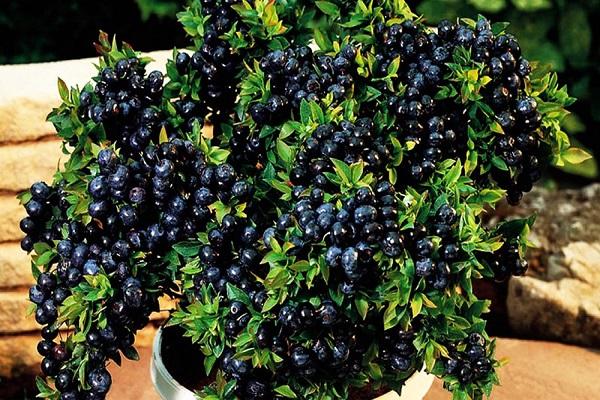
The subtleties of growing
When planting blueberry bushes, the correct technology must be followed. To get a large harvest and ensure the active development of the plantings, it is also important to prepare the seedlings and a suitable place in the garden.
Choosing the time and place for boarding
Blueberries can be planted in the spring, after the likelihood of return frosts has disappeared, or in early autumn. In practice, plants planted in late September - early October take root best..
The horticultural culture loves semi-shaded areas and high levels of humidity. You can plant bushes in sunny areas, but you will need to additionally spray the ground part.

Preparation of planting material
When choosing seedlings, you need to pay attention to the roots.Plants with an open root system require special conditions for transportation and storage. It is recommended to give preference to two-year-old seedlings. Before planting in the ground, blueberry roots are soaked in water for 15-20 minutes.
If you plan to seed blueberries, you first need to sort the planting material and select seeds without damage or rot. The selected planting material is disinfected in a weakly concentrated solution of potassium permanganate. Also, the disinfection procedure can be performed by heating at a temperature of 40 degrees. Then the seeds are soaked for germination. The seed can be transferred directly into the soil or grown in separate pots on the windowsill.
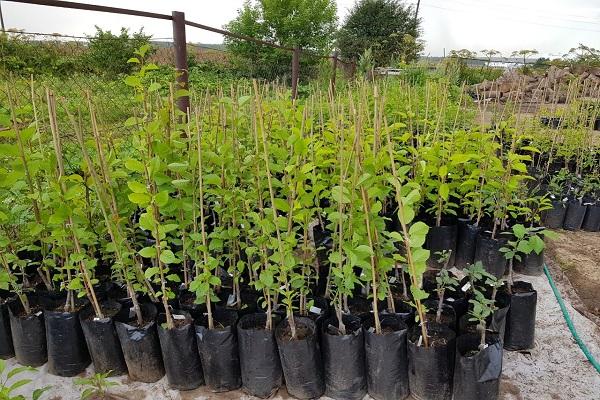
Landing technology
Before planting seedlings in the garden plot, holes are dug 1.5 x 1.5 m and about 60 cm deep. The bottom of the soil is fertilized with organic fertilizing for active root development. When grown on heavy soil, it is recommended to add river sand or rotted oak foliage to the soil mixture.
Prepared seedlings are placed in the center of the holes and sprinkled with earth. Then the plants are watered abundantly. If planting is carried out in the fall, depending on the weather conditions, it may be necessary to use a covering material for immature plants.
Care Tips
Regular and proper care is one of the main conditions for a good blueberry harvest. The berry culture needs standard agricultural techniques, including watering, fertilizing, shaping, protective treatments and shelter from frost.

Fertilizing and feeding crops
They begin to use fertilizing from the second year of development of seedlings, since annual plants do not need them. To fertilize blueberries, use organic and mineral fertilizers. Organic matter is introduced in late autumn, using compost, bird droppings, rotted manure and peat crumbs. Mineral dressing is applied in spring, after the snow cover disappears.
Nitroammophoska is best suited as mineral fertilizers. When the bushes begin to bloom, it is allowed to use extra dressing.
Watering
The roots of garden blueberries, located at a depth of 15-20 cm, develop under conditions of constant stay in a humidified environment. In summer, during periods of drought, the berry culture is watered 2 times a week, spending a bucket of liquid for each bush. Watering is carried out monthly with an acidified solution in order to maintain the optimal acidity of the soil. When doing abundant irrigation, it is important to avoid excess moisture, as this can lead to root rot and plant death..
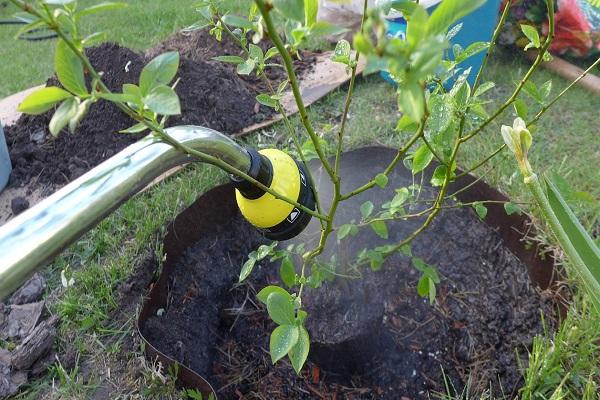
Pruning
For garden and forest blueberries, a strong thickening of the ground part is characteristic. Bush blueberries are formed annually, starting from the 3rd year of life. Plants are pruned so that the flower buds are evenly spaced on the crown. Damaged, weak and diseased shoots are removed during the pruning process.
The tops of the old branches are pinched, leaving 5-6 buds on them, which increases the size of the berry. Adult shoots bearing fruit for more than 4 years are cut at the root. Shrubs over 15 years old need radical formation - the top is completely cut off, leaving a stem no more than 25 cm high, which helps to intensively rejuvenate the plantation.
Pruning should be done in early spring, before the buds swell, or in the fall, after the foliage has fallen. Plants grown in the garden in the country and plantings that are intended for the development of the house need pruning.

Wintering
Frost-resistant types of berry crops do not need to be covered for the winter. At the same time, common blueberries may suffer from recurrent spring frosts.To prevent the death of plants, you should use a covering material, which is suitable for dense fabric, burlap or opaque plastic wrap. For shelter for the wintering of large shrubs, you will need to use supports that will help hold the material.
Diseases and pests
Unfavorable environmental conditions or violation of the rules of care lead to the invasion of harmful insects. Most often, scale insects and aphids appear on personal plots with blueberries. Sucking parasites absorb sap from leaves and stems. Large insects can be removed by hand, and spraying with insecticidal preparations is carried out to combat small pests, for example:
- Actellik;
- "Aktara";
- Inta-Vir.

For preventive purposes, after the foliage has fallen, it is necessary to clean the area around the shrub from plant debris. With the onset of spring, it is recommended to carry out preventive spraying of the plantings.
Also, the berry culture can be affected by diseases provoked by the fungus. These diseases include rust, gray mold, and miscospereliosis. Signs of defeat are:
- the appearance of spots and holes on the leaves;
- decay of roots and ground parts of plants;
- chopping berries;
- the general depressed state of the bushes.
You can save blueberries from diseases with the help of fungicides. Infections at the initial stage of development can be easily eliminated only by treatment with drugs. In advanced cases, several treatments and pruning of damaged parts of the bushes may be required.
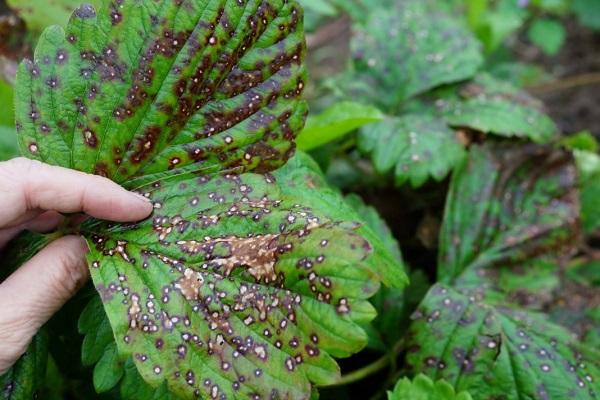
Plant propagation: methods
Reproduction of blueberries at their summer cottage is carried out in several ways. Rooting cuttings and sowing seeds are common options.
Cuttings
For plants to propagate by cuttings, it is necessary to prepare planting material from adult bushes. To do this, choose the most powerful bushes and cut healthy branches from them for cuttings. Then the material is placed in containers with peat and watered regularly. With the onset of autumn, cuttings are rooted in prepared planting holes.
Seeds
To get seeds for propagation of blueberries, you need to mash ripe berries and rinse the resulting gruel in water. When immersed in water, the seeds will float to the surface. The seed is dried, disinfected and planted in pots with peat. Before replanting plants to a permanent place, you can germinate them at home.
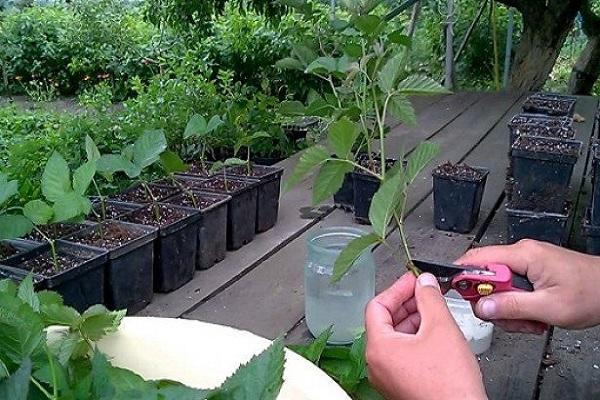
Landing features in different regions of Russia
When planning to plant blueberries, you should familiarize yourself with the specifics of growing in a particular region. It is important to take into account climatic conditions, moisture index and type of soil. For the Moscow region, the middle zone of the country and other regions, individual conditions are characteristic.
Harvest
The harvest time is in August-September. Ripe berries from plants are harvested by hand, and when grown on an industrial scale - mechanically.

How to procure
To preserve the beneficial characteristics of the berries for a long time, you can make bilberry harvesting for the winter. For this, the berries are washed, ground with sugar, the resulting mixture is laid out in sterilized glass jars and sealed. Also, the berry can be used to prepare compote, jelly and fresh consumption.
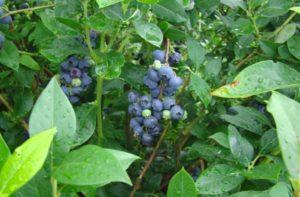


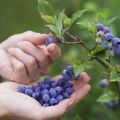






This berry is quite often exposed to various diseases, so it needs to be “fed” regularly. Select fertilizers for your soil composition, then the yield will be excellent.